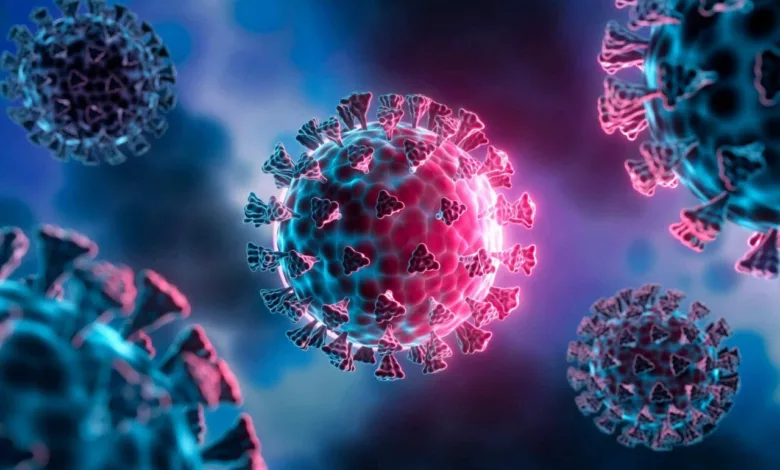Organ Damage Continues In Almost 59% Of Long COVID-19 Patients A Year After Initial Diagnosis: Study
Symptoms of organ malfunctioning, clinical signs, or aberrant clinical parameters that remain two or more weeks after the beginning of COVID-19 and do not recover to a healthy baseline may be considered long-term sequelae of the illness.

COVID-19, induced by SARS-CoV-2, can generate sequelae and other medical difficulties, such as organ damage, that remain weeks to months after initial recovery, earning it the name Long-COVID or COVID long-haulers. To gain a better understanding, is there a need for future research that stratify by gender, age, prior comorbidities, COVID-19 severity (range from asymptomatic to severe), and duration of each symptom? Multidisciplinary teams are hence, critical in creating preventative interventions, rehabilitation approaches, and clinical management strategies with whole-patient views to address long COVID-19 care.

Recent thorough research on organ impairment in long-term COVID patients conducted over twelve months found that organ damage persisted in 59% of patients a year after initial symptoms, even in those who were not badly afflicted when first identified with the virus.
The research, which was published in the Journal of the Royal Society of Medicine, focused on patients who reported acute shortness of breath, cognitive impairment, and poor health-related quality of life. The research comprised 536 long COVID patients. When first diagnosed with COVID-19, 13% were hospitalized, and 32% of those taking part in the research were healthcare workers.
Six months after their initial diagnosis, 331 (62%) of the 536 individuals were found to have organ damage. Six months later, these patients underwent a 40-minute multi-organ MRI scan (Perspectum’s CoverScan). At six and twelve months, the data revealed that 29% of patients with extended COVID had multi-organ damage, with chronic symptoms and impaired function. Twelve months after the first diagnosis, 59% of extended COVID patients exhibited single-organ dysfunction.
Symptoms were widespread at six and twelve months and related to the female gender, younger age, and single organ damage stated the Professor of Clinical Data Science at the UCL Institute of Health Informatics, Dr. Amitava Banerjee, The study found that symptoms improved between six and twelve months (severe breathlessness decreased from 38% to 30% of patients, cognitive dysfunction decreased from 48% to 38% of patients, and poor health-related quality of life decreased from 57% to 45% of patients).

He stated that individuals, health systems, and economies are all concerned about the impact on quality of life and time away from work, particularly among healthcare personnel. Many of the healthcare professionals in our research had no prior illness, but 19 of the 172 were still symptomatic at follow-up and missed work for a median of 180 days.
According to the researchers, the underlying processes of long COVID remain enigmatic because there was no evidence from symptoms, blood tests, or MRI to characterize long COVID subtypes accurately. They believe that future studies should look at the relationships between symptoms, multi-organ dysfunction, and function in bigger cohorts.
Prof Banerjee said Organ deterioration in long COVID has consequences for symptoms, quality of life, and long-term health, emphasizing the need for long COVID prevention and integrated therapy.
A description of the disease from the past.
SARS-CoV-2, a coronavirus associated with the severe acute respiratory syndrome, was found in China in December 2019. After a year, more than 90 million individuals worldwide have been infected, and over 2 million people have died as a result of the coronavirus illness 2019. Although tremendous efforts have been made by the scientific and medical communities to sequence, diagnose, treat, and prevent COVID-19, the long-term repercussions of the illness on individuals have yet to be disclosed.
Symptoms, clinical signs, or aberrant clinical parameters that remain two or more weeks after the beginning of COVID-19 and do not recover to a healthy baseline may be considered long-term sequelae of the illness. Although such changes are most commonly recorded in severe and critical illness survivors, they can also occur in those with a minor infection who did not require hospitalization. It has not been determined if sex, gender, age, ethnicity, underlying health issues, viral dosage, or progression of COVID-19 increase the risk of developing long-term consequences.

The last call.
Additional data and research from multidisciplinary teams are needed to understand the causes, processes, and hazards to create preventative interventions, rehabilitation approaches, and clinical management strategies with whole-patient views to address COVID-19 care. From a clinical standpoint, clinicians should be aware of the symptoms, signs, and biomarkers present in COVID-19-affected patients to rapidly diagnose, identify, and limit lengthy COVID-19 development, reduce the risk of chronic sequelae, and assist patients to regain pre-COVID-19 health.
All of these impacts necessitate more research to construct tailored, dynamic cross-sectoral therapies in Post-COVID clinics with several specializations, such as graded exercise, physical therapy, ongoing checks, and cognitive behavioral therapy as needed.
edited and proofread by nikita sharma






